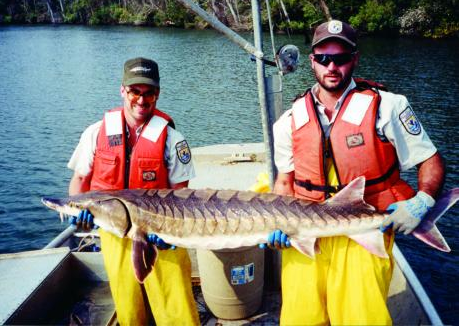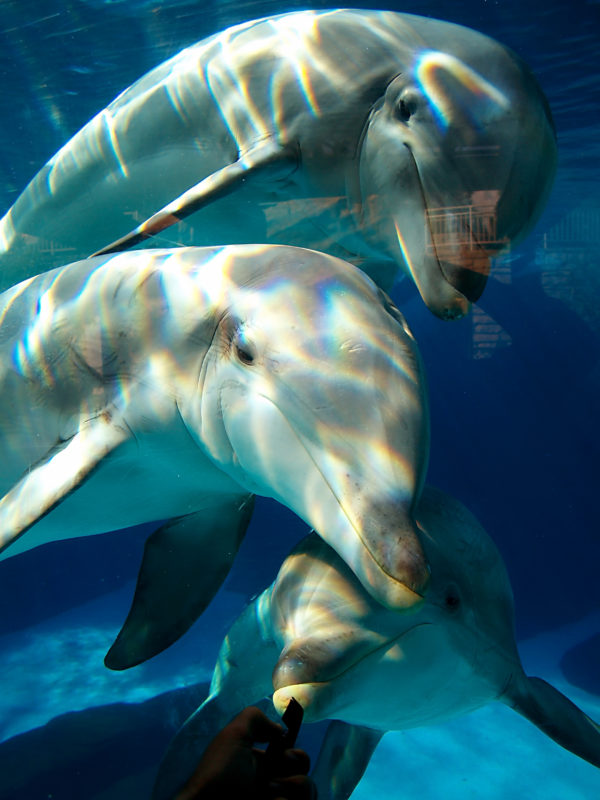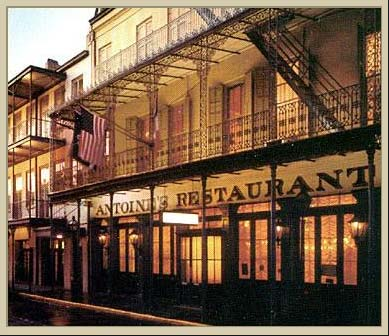Seafood – one can scarcely imagine New Orleans without it. The city’s reputation for expertise in this culinary discipline reaches across the world. However, throughout the history of the city, this industry has often been threatened by overfishing. The fact that people’s livelihoods, as well as the culture of the entire city, are at stake when it comes to fish and seafood makes this is a serious topic to be considered.
According to environmental researcher and author Michael Gravitz, the term overfished “typically means that a fish population has been reduced to below 25% of its original size,” and “overfishing means that a fish stock is being caught faster than it can replace itself and is therefore heading toward overfished status, or if already overfished, not recovering to healthy levels” (Gravitz, Michael. “The Gulf, From Overfishing to Healthy Waters.” Environment Texas Research and Policy Center. Print. Page 1). In order to avoid overfishing, the U.S. government sets regulations restricting people from fishing for certain species of marine animals. These restricted animals are then added to a list of government-protected species, published by the National Oceanic and Atmospheric Administration (NOAA).
Government-protected species, as laid out by the Federal Endangered Species Act of 1973, fall under two categories: endangered and threatened. In layman’s terms, the U.S. Fish and Wildlife Service differentiate the two by saying “endangered species are at the brink of extinction now. Threatened species are likely to be at the brink in the near future” (“What is the Difference Between Endangered and Threatened?” U.S. Fish and Wildlife Service. Fish and Wildlife Service Midwest Region. Web. 31 July 2013. http://www.fws.gov/endangered/esa-library/pdf/t-vs-e.pdf).
History of Overfishing

Spencer Baird circa 1867. Photo from the Smithsonian Institution Archives
The first known use of the term “overfishing” was in 1867, just four years before naturalist and future Smithsonian curator Spencer Baird convinced Congress to establish the U.S. Commission of Fish and Fisheries (commonly referred to as the Fish Commission) to study this problem (Merriam-Webster Online Dictionary, s.v. “overfish” ; and U.S. Fish Commission, Annual Report, by Spencer Baird. Washington, D.C. Government Printing Office, 1873. 7). Originally, the focus of this research was depletion of fish in the New England states, namely Massachusetts and Rhode Island, with little mention of the Gulf South (“Annual Report.” U.S Fish Commission. Print. Page 7). While groundbreaking, Baird’s initial efforts at fishery restriction were politically unsuccessful due in major part to public ignorance of the complex biology involved (“Spencer Baird and Ichthyology at the Smithsonian.” Smithsonian Institute. Web. 13 July 2013. http://vertebrates.si.edu/fishes/ichthyology_history/fish_commission.html). However, his work at alleviating this problem ushered in the science of modern marine conservation.

Wildlife officials holding a Gulf Sturgeon. Photo by Katja Shultz with the U.S. Fish and Wildlife Service.
Although the Fish Commission did lead to several policies and organizations still in place today, such as the establishment of the U.S. Fish and Wildlife service in 1940, the topic of overfishing did not become vogue until the 1970s. In fact, in New Orleans the first mentions of overfishing were spoken of as a minor hindrance or annoyance, rather than a real problem. The topic is discussed in New Orleans reporter M’fadden Duffy’s 1961 “All Outdoors” column. However, it is in the form of a warning against fishing one spot too much for practical reasons rather than ecological ones (Duffy, M’Fadden. “All Outdoors.” Times Picayune. Print). The first time overfishing was talked about as a “controversial topic” in New Orleans was not until 1973, when it was discussed in the New Orleans Times-Picayune (“200 Mile Limit is Big Talk at Expo.” Times-Picayune. Print). In other words, the notion that if one catches all the fish in an area, he or she cannot fish there anymore was common knowledge early on. However, it took until relatively recently in Louisiana to realize that the Gulf of Mexico, while vast, is not an infinite pool of resources.
Historical Impact of Overfishing
While overfishing was being discussed scientifically, it did not seem to concern the general public until there was a noticeable economic effect. For example, throughout the nineteenth and twentieth centuries, Sturgeon, a once abundant Gulf fish, were harvested for caviar and their meat. As Kevin Lee McIver of the Alabama Forestry Commission points out, in 1902 at the peak of Sturgeon production, record annual harvests of 259,000 pounds were recorded. This number steadily decreased throughout the next century. By 1945, the harvests had dwindled to 3,500 pounds annually. Due to continued depletion, Gulf Sturgeon was added to the threatened species list in 1991 (McIver, Kevin Lee. “Threatened and Endangered Species: Gulf Sturgeon.” Treasured Forrest Magazine. Web. 31 July 2013. http://www.forestry.alabama.gov/Publications/TREASURED_Forest_Magazine/2002%20Spring/Threatened%20and%20Endangered%20Species%20-%20Gulf%20Sturgeon.pdf). However, just one year earlier in 1990, Sturgeon dishes were featured on several New Orleans restaurants’ menus. Among these restaurants was Rosco, which had a Sturgeon dish that was praised by Times-Picayune critic, Gene Bourg (Bourg, Gene. “New Mood at the Old Half Moon.” Times-Picayune. Print). However, the next year there was very little commotion about the fish’s protected status and subsequent absence from menus. In fact, rather than a full article about the ban on Sturgeon fishing, the Gulf Sturgeon is only mentioned in passing in a reminder about fishing seasons, noting that Sturgeon season is “closed, year-round” (Horst, Jerald. “Wildlife Agency Increases Limit on Bass.” Times-Picayune. Print).

The Gulf of Mexico is also home to Bottlenose Dolphins.While not actively fished for, overfishing’s practices and effects on ecosystems have contributed to their endangered status. Photo by Bryce Bradford.
However, when one thinks of famous seafood in New Orleans, the Gulf Sturgeon hardly leaps to mind. Sturgeon fishing and production is not a big industry, and therefore the dwindling Sturgeon population was not bringing in large profits anyway. This helps to explain why this new policy did not cause the reaction in people that one might expect. On the other hand, the opposite is the case for larger markets. These larger markets, such as those for shrimp, crabs, and oysters, caused a stronger reaction due to their economic, rather than ecological, impact.
As of 2008, 31 percent of federally regulated fish stocks experienced overfishing. This has likely had serious effects on entire ecosystems. When overfishing occurs, it disrupts the natural flow of the food chain. What this means is that when humans take a disproportionate amount of fish out of an environment, the predators that would normally eat this fish have a shortage of food (Gravitz). Simply put, the fewer fish in an environment, the fewer predators that can survive. This helps explain why there is no shortage of predators on the Gulf of Mexico’s protected species list, including three species of shark and two species of sawfish (“An Overview of Protected Species Commonly Found in The Gulf of Mexico,” NOAA Fisheries Service, Updated February 2008, http://sero.nmfs.noaa.gov/pr/pdf/Protected%20Species%20In%20GOM-web%20version%202-7-08.pdf).
Overfishing Today
Seafood depletion also has had a dire economic impact on New Orleans. For example, a 2010 shrimp and oyster shortage caused serious problems for both restaurants and consumers alike. Nola.com, the online counterpart of the Times-Picayune, reported that many restaurants were forced to choose between raising their menu prices in order to compensate for higher seafood prices, or eliminating shrimp and oyster dishes altogether (Reid, Molly. “This Week in Seafood: Shortages and High Prices Put Customers and Restaurants on Alert.” Nola.com. Web. 31 July 2013. http://www.nola.com/food/index.ssf/2010/05/the_week_in_seafood_shortages.html). A Lake Pontchartrain crab shortage in 2013 also sent many local fishermen into non-fishing work in order to pay the bills (“Shortage in Lake Pontchatrain Bedevils Crabbers.” Associated Press. Advocate. Web. 31 July 2013. http://theadvocate.com/home/6198742-125/shortage-in-lake-pontchartrain-bedevils).

Even the famed Antoine’s was among those affected by the shrimp and oyster shortage of 2010. Photo by Antoine’s Restaurant
A seemingly perfect alternative for wild fishing, aquaculture, has also yielded mixed results. Aquaculture, also known as fish farming, is the process of domestically raising and cultivating fish as if they were crops. In Louisiana, two key examples of farm-raised seafood are crawfish and catfish. This practice has been successful in keeping the abundance of the fish up and the prices stable. However, it forces farmers to choose between environmentally unfriendly methods such as chemical additives to farming waters, or the heightened expenses associated with natural methods such as using vegetation and other species of fish to keep the water fertile (Morris, Christopher. “Cotton, Chemicals, Catfish, and Crawfish.” The Big Muddy: An Environmental History of the Mississippi and Its Peoples from Hernando de Soto to Hurricane Katrina. Oxford University Press, 2012. Print). It is interesting to note that such measures have not been attempted with the Gulf Sturgeon. While this may help the species to recover from its threatened status, the profit margin of the fish makes it not a viable farm fish.
All things considered, seafood still forms a crucial part of the soul of New Orleans. For this reason, it must be protected from dangers such as overfishing and depletion. While fishing is regulated better by the organizations of today than it was in the past, the fight is far from over. This industry impacts everyone from fishermen and restaurant owners to anyone who has ever had the pleasure of attending a crawfish boil. For this reason it is everyone’s responsibility to help protect the delicious delicacies that New Orleans loves so much.
Editor’s Note: The series “Something Fishy” was a week-long series curated by Rosalind Kidwell as part of the Digital Research Internship Program in partnership with ViaNolaVie. The DRI Program is a Newcomb Insitute technology initiative for undergraduate students combining technology skillsets, feminist leadership, and the digital humanities.
An integral part of life in South Louisiana is our extensive aquatic life. Fish permeate New Orleans culture, whether they’re from the Gulf or a nearby Bayou, whether they’re on or off our plates. This collection of articles for “Something Fishy,” explores the importance of these creatures in the nearby area. However, this abundance of seafood is not something to be taken for granted, even in New Orleans. This article explores the impact of overfishing and the risks associated with it. It was originally published on MediaNola on July 31, 2013.









